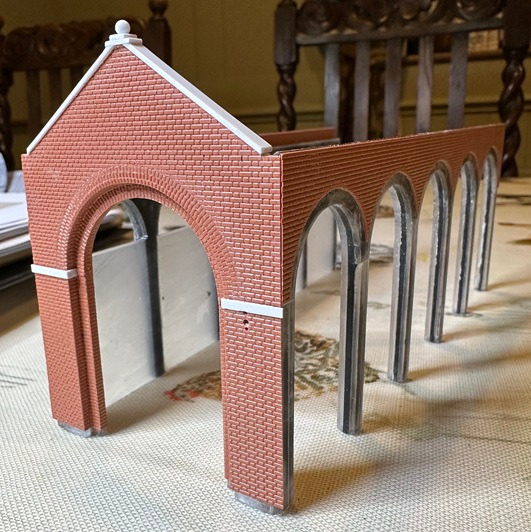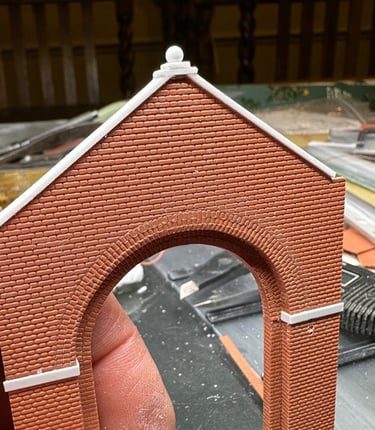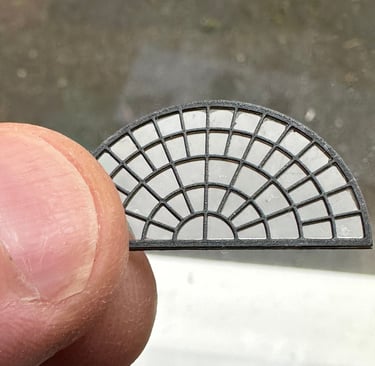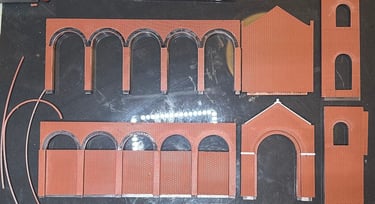Interpreting Coventry's original Engine Shed
While photos exist of the engineshed comparison with original drawings evidence that it significantly altered and needed interpretation to produce a model.
12/28/20233 min read


As a Christmas present to myself I decided to tackle a bit of architectural modelling as it’s a long time since I did any and the seasonal break presents a good opportunity.
The first building on my list is the engine shed and pump house, a slightly easier one than the station building itself which still presents quite a few unresolved details. My tried and trusted method is to use 2mm acrylic sheet from the local builders merchants. This is layered with styrene sheet where thicker areas are necessary and finally clad in brick embossed styrene. I tend to work from the outside in, cutting the brickwork to the correct dimensions, taking care to mitre corners and line up courses etc. The main structure is then cut and glued to the back with Limonene, corners are lapped to create a flat pack kit that only goes together once all the detail is complete.
Fig.1. The end and north side. I have left the arches open which they may or may not have been (we don’t know) but this allows for a stalled loco to be easily poked and this face is actually on the opposite side to the viewing public. This cutaway approach also provides an opportunity for a bit of interior detailing which should be fun.
Fig.2. A close up of the end with its raised gable, capping and decorative ball (dress making pin) detail.
Fig.3. The windows are a specially commissioned etch to the correct dimensions according to photographic evidence. I’ve used a frame each side as the interior will be visible and sandwiched in between is a glass cover slip from a microscope slide. This is a very satisfying way of glazing windows as any bits of glue (epoxy) that stray onto the glass can simply be scraped off without any scratching or discolouration of the glass.
Fig.4. This shows the union between the shed to the left and the pump house to the right. I tried every which way to make sense of the way these two buildings integrated and came to the conclusion that they didn’t. It just doesn’t work. It seems that they built the pump house and then built the engine shed as a tack-on to the side. This is fine as long as I build it that way and don’t try any fancy tricks involving trying to build the whole lot as one unit (which is where I kept coming unstuck).








Fig.5. As far as I will get this side of Christmas. Under pressure to clear and clean the dining room table (my usual work station) I’ve called it a day at this point. Still much to do in terms of cutting the arch brickwork, applying stone corses and other details. Hopefully the next blog in the new year will see the building coming together as a three dimensional structure and work on the pump house can continue.
